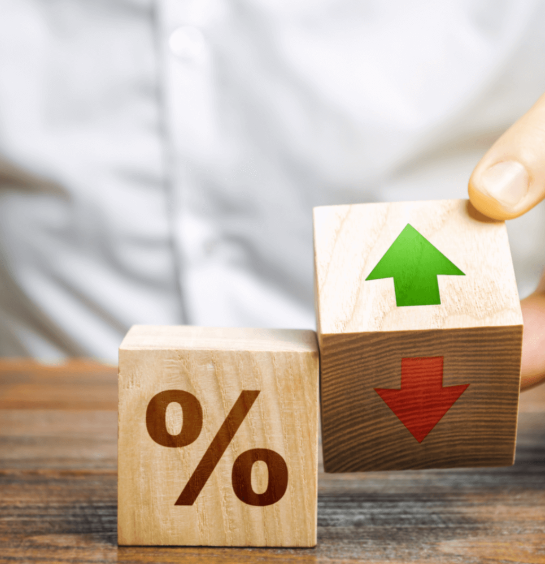How Interest Rate Changes Affect Household Savings and Loans

Interest rates are a fundamental aspect of personal finance, impacting everything from household savings to borrowing decisions. Set by central banks like the Federal Reserve, interest rates essentially determine the “price” of money, influencing the cost of loans and the returns on savings. This blog explores how shifts in interest rates affect household financial decisions and how individuals can adjust their strategies in response to changes in the economy.
Understanding Interest Rate Changes
Central banks are responsible for setting interest rates as part of their monetary policy. Their decisions are aimed at achieving specific economic goals, such as controlling inflation or stimulating economic growth. When interest rates rise, it typically aims to curb inflation by making borrowing more expensive, which reduces spending. Conversely, lower interest rates are used to encourage borrowing and spending, boosting economic activity.
Central banks adjust interest rates using tools like buying and selling government securities to either increase or decrease the money supply. These changes have a direct effect on household finances, particularly in areas like mortgages, car loans, and savings accounts.
Impact on Household Savings
The connection between interest rates and household savings is direct and significant. Higher interest rates make saving more appealing because they offer better returns. For example, if the interest rate on savings accounts rises from 2% to 5%, households experience a notable increase in their savings returns. This higher reward encourages people to save more, delay spending, and focus on long-term financial goals like retirement or building an emergency fund.
On the flip side, when interest rates drop, the incentive to save diminishes. Low rates mean savings accounts and other low-risk investments offer returns that may not even keep pace with inflation, causing the real value of money to decrease over time. In such environments, households may seek higher returns by taking on more risk, such as investing in stocks or real estate. Additionally, lower interest rates often encourage people to spend more, as borrowing becomes cheaper and the returns on savings are less attractive.
These shifts in savings behavior are not just personal decisions—they also have a broader impact on the economy, as increased consumer spending can boost demand, while higher savings rates can limit economic activity in the short term.
Impact on Household Loans
Interest rates have a significant influence on the affordability of loans. When rates rise, borrowing costs increase. This can make mortgages, car loans, and personal loans more expensive, leading households to rethink their borrowing decisions. For example, a rise in interest rates can cause monthly mortgage payments to spike, especially for those with variable-rate loans. As a result, many households may delay purchasing homes or taking out new loans, which can slow down consumer spending.
On the other hand, when interest rates fall, borrowing becomes cheaper. Lower rates reduce monthly loan payments, making it easier for households to take out loans and make large purchases, such as homes or cars. Lower borrowing costs can also encourage individuals to take on more debt, boosting overall spending and economic activity. During times of low interest rates, households are more likely to invest in property, start small businesses, or make other significant purchases, stimulating the economy.
Balancing Financial Decisions
Changes in interest rates often require households to reevaluate their financial strategies. Higher interest rates typically make saving more attractive, leading individuals to prioritize reducing debt and increasing their savings. However, when rates are low, borrowing becomes more enticing, and households may choose to spend more, take on additional debt, or invest in higher-risk assets.
For instance, during a period of high interest rates, households may focus on paying down credit card debt or other loans, reducing their overall debt burden. In contrast, when rates are low, individuals may feel encouraged to take out loans or make large purchases, knowing that the cost of borrowing is relatively cheap. The challenge for households is to strike the right balance between saving, borrowing, and spending, depending on the economic environment and their long-term financial goals.
Broader Economic Effects
The decisions made by households in response to interest rate changes can have significant implications for the broader economy. When households choose to save more due to higher interest rates, overall spending in the economy can decrease, leading to slower growth. However, when interest rates are lowered, and households borrow and spend more, economic activity tends to increase, which can fuel growth and potentially lead to inflation.
These shifts are part of a feedback loop. If borrowing and spending rise, central banks may raise interest rates to prevent the economy from overheating. Conversely, if spending slows down and the economy stagnates, central banks may reduce rates to stimulate demand. The actions of millions of households, adjusting their financial strategies based on interest rates, create larger economic trends that influence central bank policies.
Key Takeaways
Interest rate changes are powerful tools that affect household savings, borrowing, and spending decisions. Higher interest rates encourage saving but make borrowing more expensive, while lower rates incentivize spending and borrowing but reduce the returns on savings. Understanding how these shifts influence personal finances is crucial for individuals to make informed financial decisions.
By staying aware of how interest rate changes impact their financial situation, households can adapt their strategies, whether that means saving more during times of higher rates or taking advantage of low borrowing costs when rates are low. These personal financial decisions, when combined across millions of households, play a significant role in shaping the economy, highlighting the importance of understanding and responding to the broader economic signals sent by central banks.


 English
English 












































































































































































































































































































































































